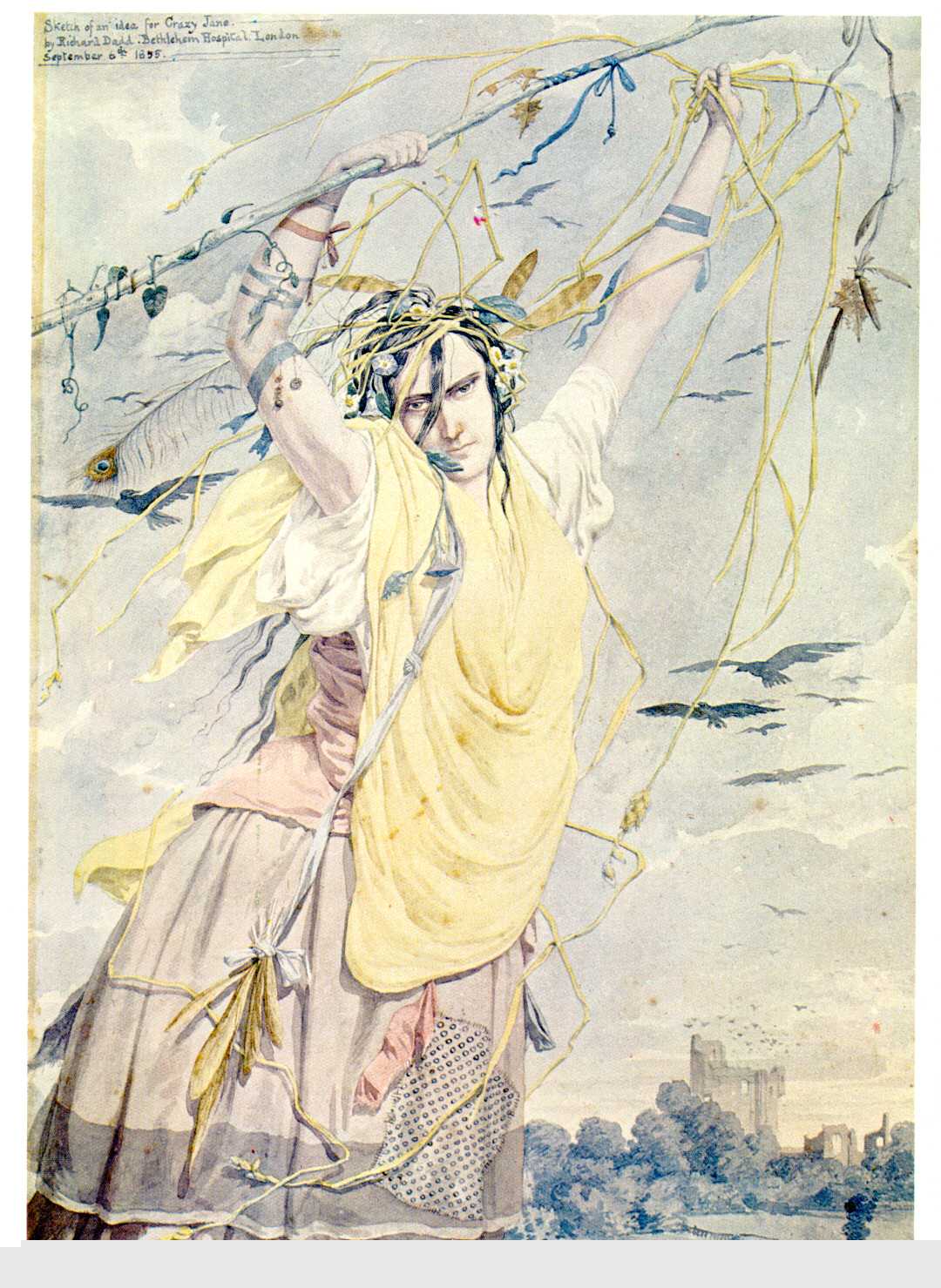It soon became apparent that something was very wrong in Dadd's head. The artist began suffering from paranoid delusions, in particular, that he was a decendant of the Egyptian god Osiris, and that the god was compelling him to battle with the devil himself. After being sent back to England, Dadd's father, who had begun to notice odd behavior in Richard's brother as well took Richard to a doctor, who proclaimed him mentally ill. (Remember, this is the Victorian Period. "Madness" is a valid diagnosis)
Unsure of how to proceed, Richard's father travelled with his son on holiday. Richard promised to share his thoughts with his father and instead murdered him with a razor and fled to France. Even in his flight, Dadd attacked his fellow passengers, perhaps thinking that they too were agents of the devil.
Dadd was spared a trial. He confessed to the murder of his father and was forcibly committed to Bethlehem Hospita (AKA Bedlam) indefinitely.
 Up until the mid 19th century, Bedlam was open to the paying public as a freakshow backslash prison. Visitors could agitate the prisoners and watch them fight like bugs in a jar. By nearly all accounts, the asylum was every bit as hellish as the slang-term derived from its name indicates. Dadd was lucky enough to get in just as Bedlam was remaking its image as a more "patient oriented" establishment. He was allowed to continue painting. Dadd captured fellow inmates, scenes from Shakespeare, and minutely detailed obsessively intricate images of faeries. His most famous work is Faerie Feller's Master Stroke: a mob of fairies intertwined with foliage in a scene that can only have been created by a talented man with waaaay too much time on his hands. He worked on the painting for over nine years, using a magnifying glass to paint the details.
Up until the mid 19th century, Bedlam was open to the paying public as a freakshow backslash prison. Visitors could agitate the prisoners and watch them fight like bugs in a jar. By nearly all accounts, the asylum was every bit as hellish as the slang-term derived from its name indicates. Dadd was lucky enough to get in just as Bedlam was remaking its image as a more "patient oriented" establishment. He was allowed to continue painting. Dadd captured fellow inmates, scenes from Shakespeare, and minutely detailed obsessively intricate images of faeries. His most famous work is Faerie Feller's Master Stroke: a mob of fairies intertwined with foliage in a scene that can only have been created by a talented man with waaaay too much time on his hands. He worked on the painting for over nine years, using a magnifying glass to paint the details.Then, Queen wrote a song about it, which is, of course, the highest apex to which an artist can aspire.
My favourite of Dadd's works online is a Sketch of an Idea for Crazy Jane, which is inspired by a poem by Yeats about an older woman's justification for her sexuality. Dadd's model for Jane is a fellow inmate: a crossdressing man. Dadd's inner turmoil and struggles with his own mental demons are apparent in his work. Jane is beautiful, haunting, and oddly tortured. She's trapped. His Walpurgis Night needs no analysis. In Dadd's other work, faces are oddly distorted, and eerie details grab the corner of your eyes which are focused on the normal victorian subjects of a woman and her child or a Biblical scene.
Now, I'm going to venture into fuzzy headed liberal territory here and propose that when art is created by the most despicable members of our society, people whose crimes we cannot overlook and whose crimes colour any other thoughts on their lives, it gives us a window past the damage that they have inflicted on society. Art reminds us of the humanity of the inhuman. Or at least allows us to empathize with their extreme boredom.
Prison artists in the US are sometimes participants in rehabilitation programs that encourage arts and crafts among inmates. The ones I find interesting are the ones who create art out of hoarded prison supllies, making papier mache out of wet toilet paper and bread, and elaborate sculptures out of matchsticks and cigarette wrappers. A characteristic of this art is that it's painstakingly detailed: a testament to the obsessions of men and women who have nothing else to do and are desperate to take their minds off of their situation.
Another great link on prison art is here: this one even details the extraction of pigments from objects aquired in prisons in order to paint.


3 comments:
Would it surprise you if a conservative (sometimes a fuzzy-headed one) thought that you made a good point here? :-)
LOL. It doesn't really surprise me. You seem to be a person who's thought out their views and I respect that regardless of whether we fall on the same part of the idealogical spectrum.
Post a Comment